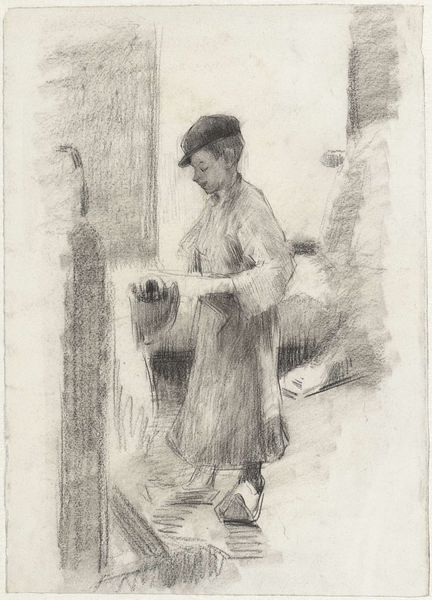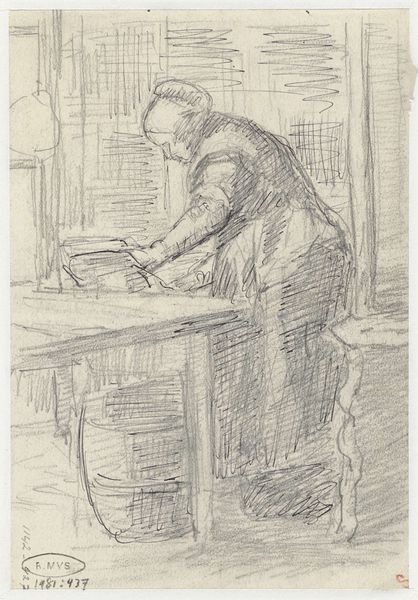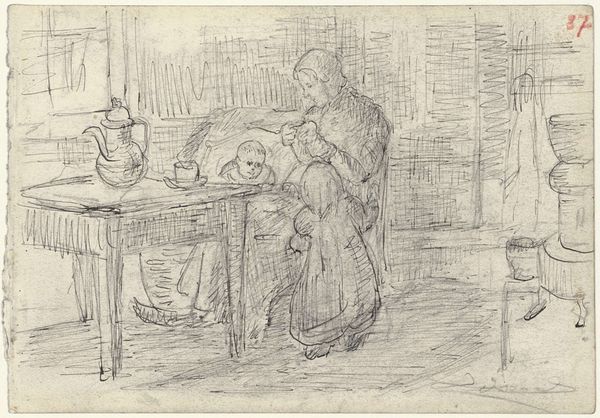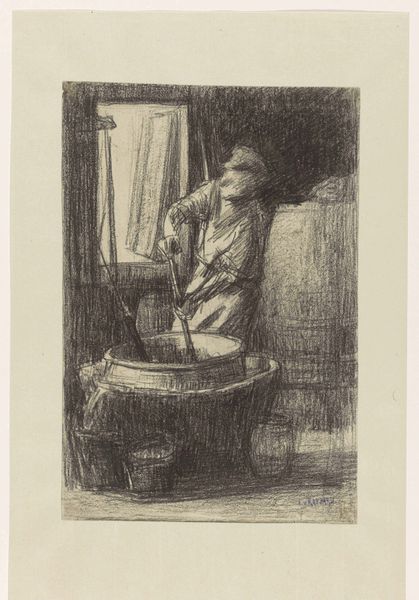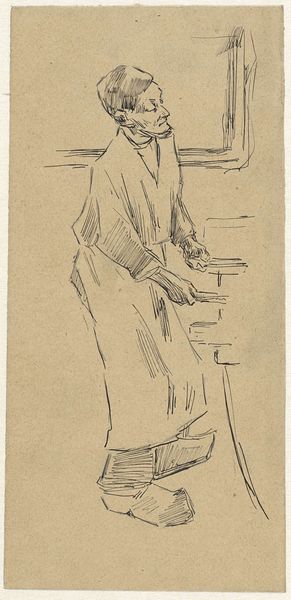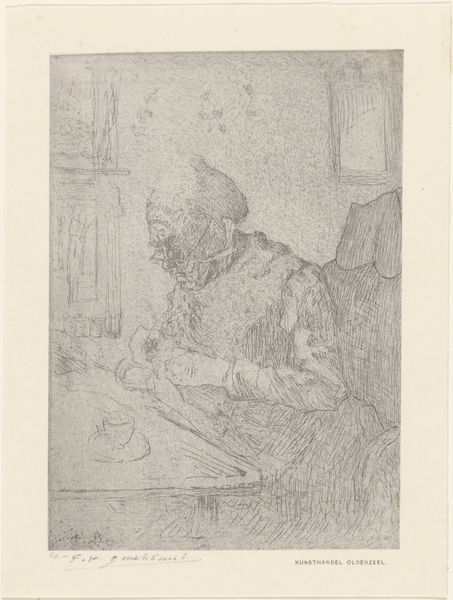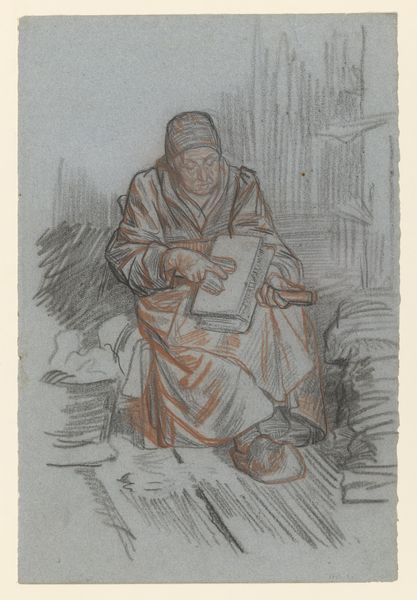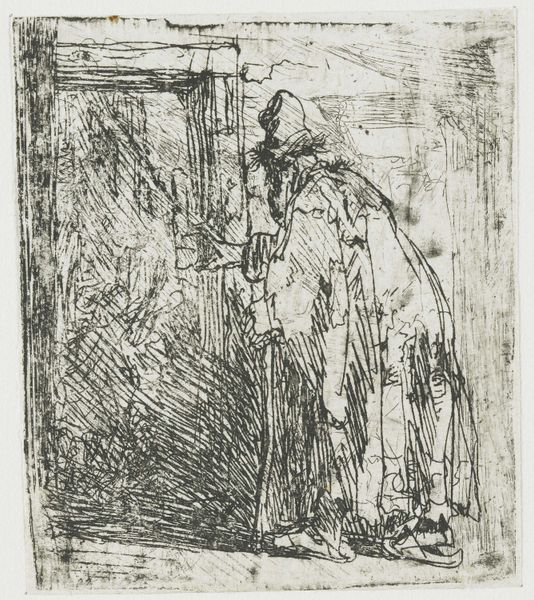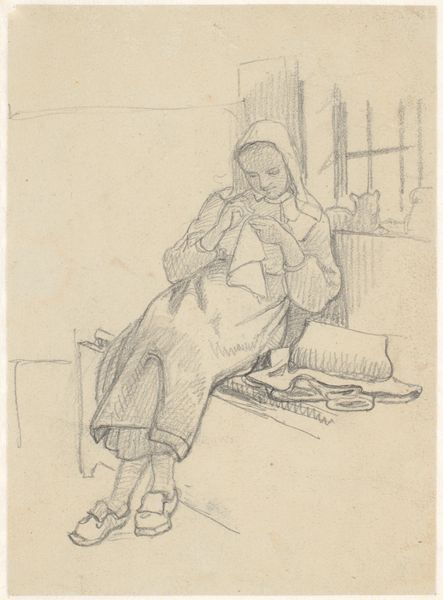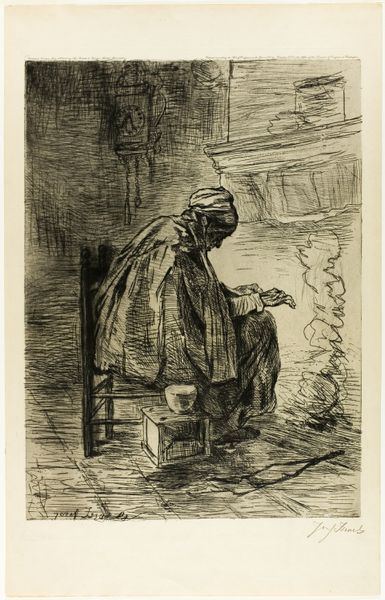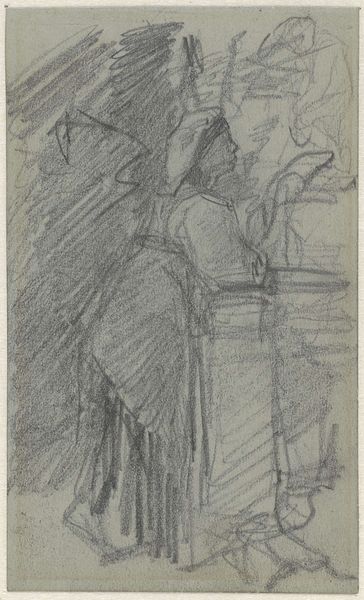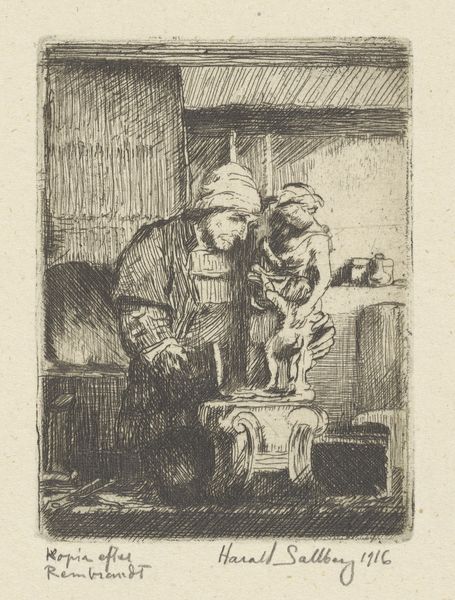
drawing, paper, pencil
#
portrait
#
drawing
#
dutch-golden-age
#
pencil sketch
#
paper
#
folk-art
#
pencil
#
genre-painting
#
academic-art
#
realism
Dimensions: height 181 mm, width 126 mm
Copyright: Rijks Museum: Open Domain
Editor: So, this is "Standing Peasant Woman in a Kitchen," a pencil drawing on paper by Jozef Israëls, dating sometime between 1834 and 1911. There's a somber feeling, perhaps from the humble subject and the monochrome palette. What strikes you about it? Curator: What immediately grabs me is the stark representation of labor, specifically of women's labor in the 19th century. Israëls situates this woman in a very specific socio-economic position. The sketch itself, with its raw, almost hurried lines, speaks to the urgency and relentlessness of her work. Does it bring to mind any particular questions about class or gender for you? Editor: Absolutely. The bowed head, the simple clothing, it all emphasizes the lack of privilege. I’m wondering, how much was Israëls intentionally commenting on these social inequalities? Or was it simply documenting a reality? Curator: It's probably a complex interplay of both. Realism as a movement often aimed to depict life as it was, especially the lives of those often ignored by art. However, choice of subject is never neutral. Israëls, by focusing on this woman and her daily grind, brings her labor into the viewer's consciousness. Do you think it humanizes her, or does it further Other her through its depiction of poverty? Editor: That's a tough question. I see empathy, but also perhaps a distance, a separation between the artist and the subject. Like we are looking *at* her hardship rather than understanding it. Curator: Precisely. That tension between observation and understanding is something we still grapple with today in representations of marginalized communities. This image prompts a discussion on who gets to tell whose story, and how. It forces us to examine the power dynamics inherent in the act of artistic representation itself. Editor: I see that. This simple drawing opens up some pretty big questions about representation and social justice, things I hadn't considered at first glance. Curator: Indeed, art has a knack for revealing uncomfortable truths. Even the humblest sketch can be a powerful tool for social commentary.
Comments
No comments
Be the first to comment and join the conversation on the ultimate creative platform.
